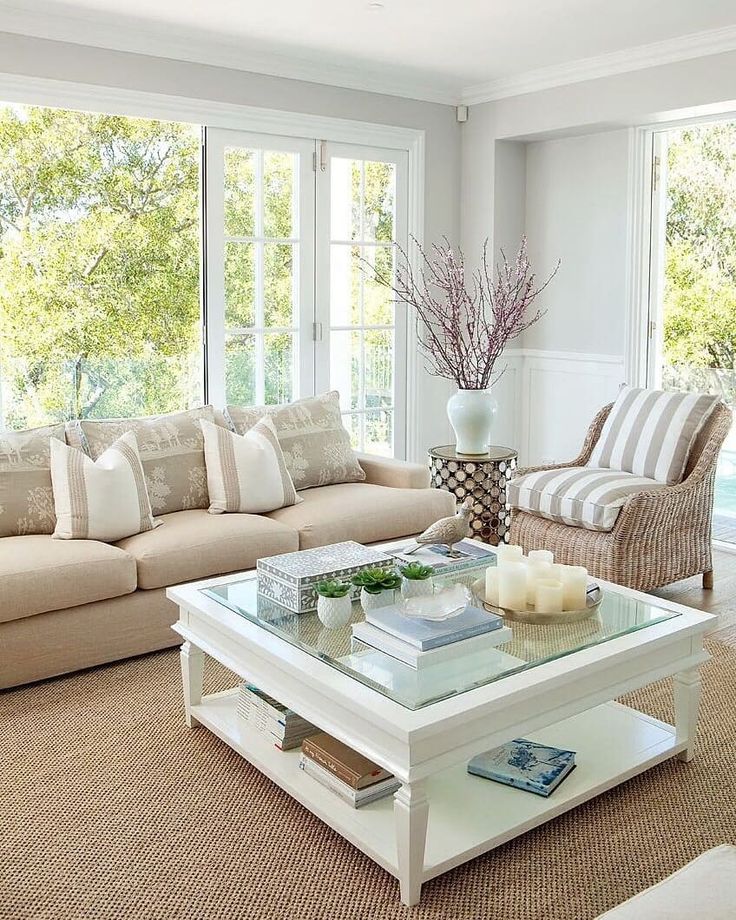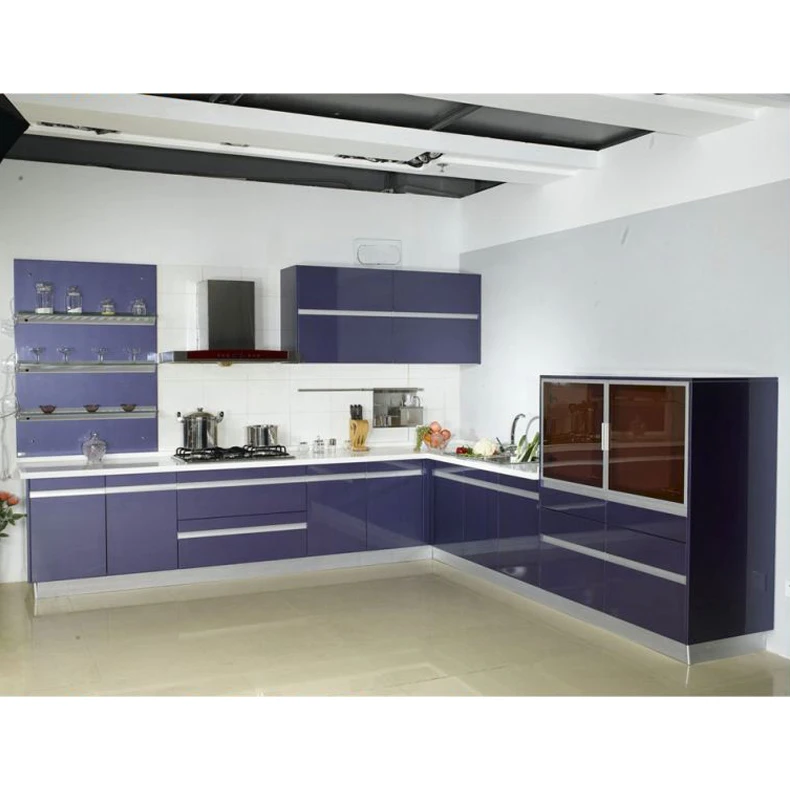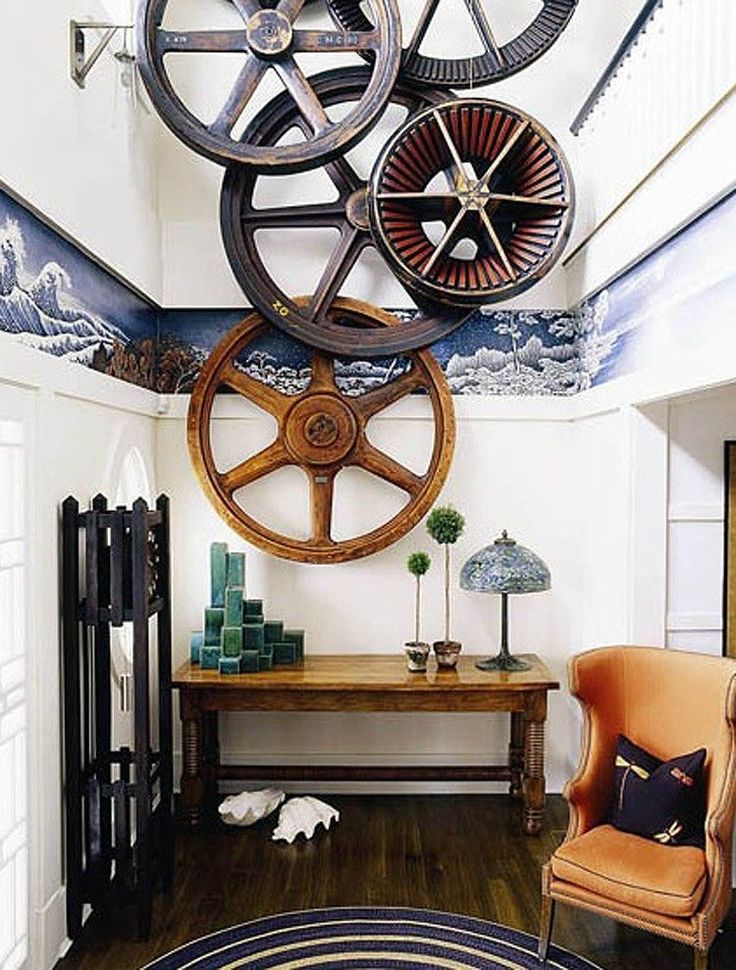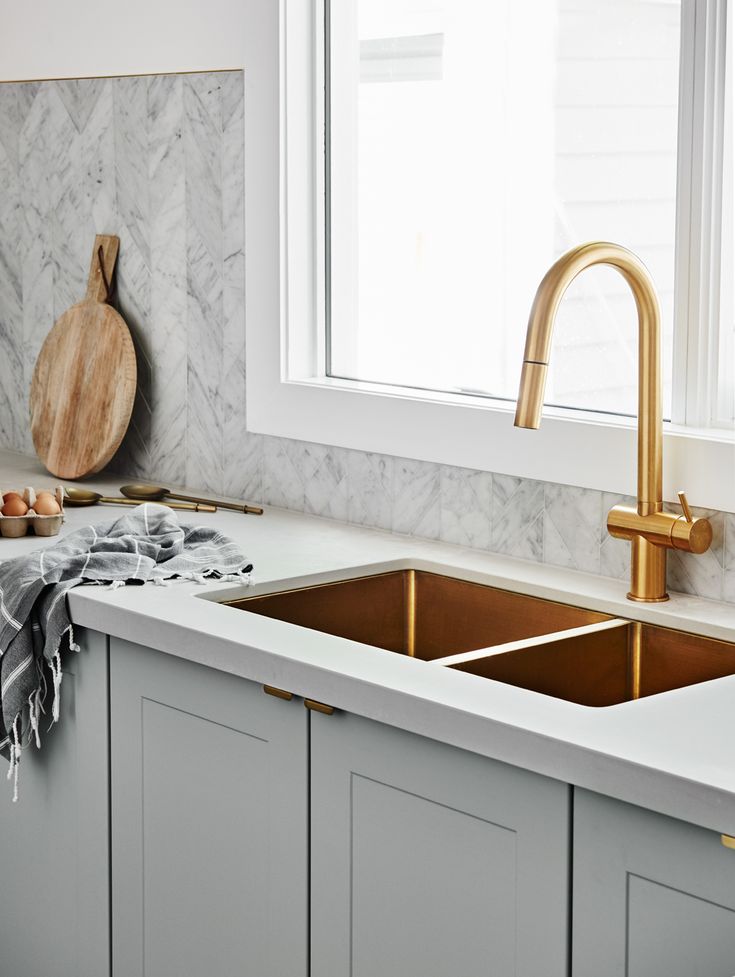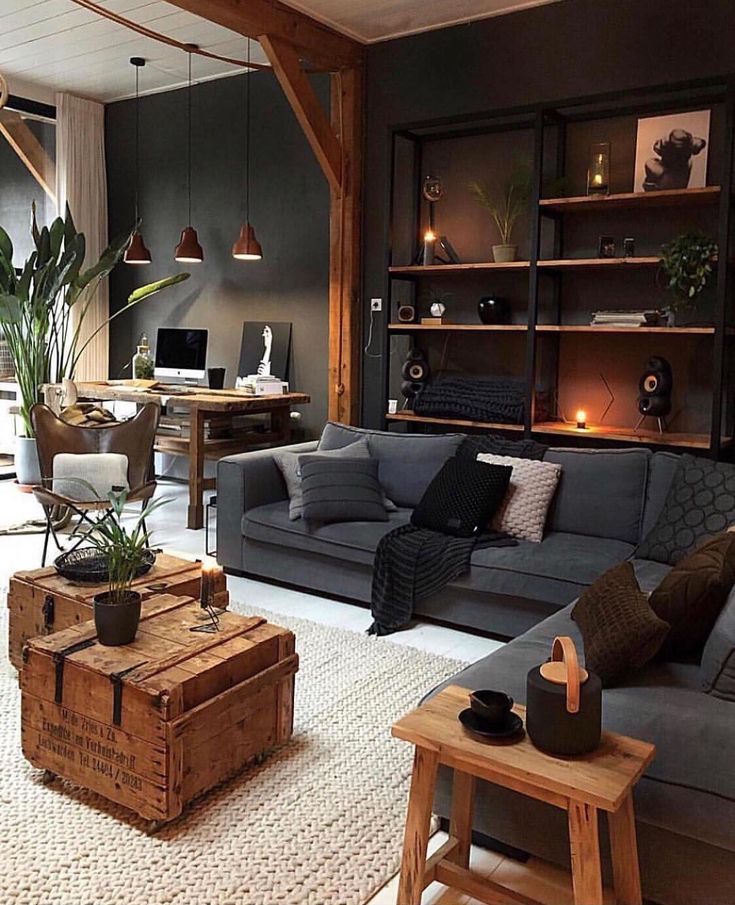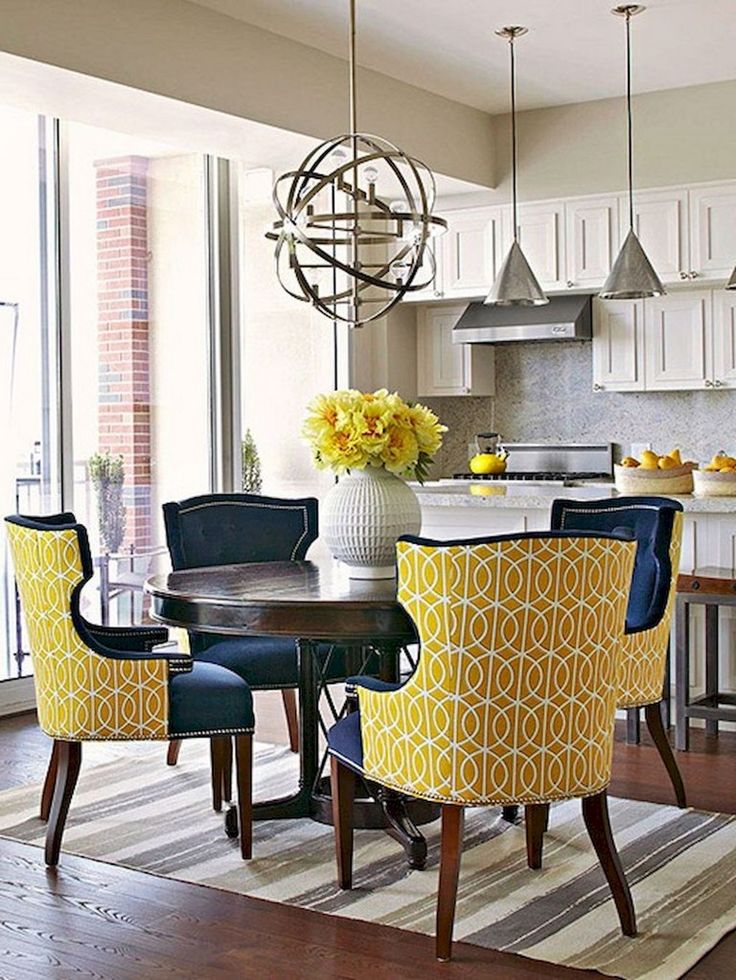Garden trellis design
25 Awesome Garden Trellis Ideas
If you plan on growing any climbing, creeping plants – whether it’s the heavy-duty creeping roses, wisterias or grape vines, medium-sized Virginia creeper or the just the delicate morning glories – all will need a structure to hang on to, something to appropriately support their growth.
That “something” is the garden trellis.
What Types Of Garden Trellises Are Out There?
There are many shapes and sizes of garden trellises. They can differ drastically in their design, material, and the ease of construction. Tall, gate and tunnel-like trellises are called arbors and pergolas.
In tune with their diversity, in this article I’ve covered a large variety of garden trellises – from the primitive, ancient designs such as the teepee pole trellis, to elaborate metal trellises.
Since these days garden trellises are often factory-made and store-bought, I haven’t discriminated against them – I included them along with the DIY projects. Some of us lack the time or the skills to make our own trellis – and it shouldn’t stop us from finding out all the options. And for the sworn makers out there, commercial designs are always a perfect opportunity for DIY hacks!
How To Navigate This Article
To make navigating through the world of trellises easier for you, I’ve divided our best trellis ideas into three categories: “Simple,” “Medium” and “Advanced”, which I’ll explain along the way.
Now, let’s get down to trellis business!
Here are 25 examples which will give you an idea about the diversity of trellises.
Category: Simple
These trellises are easy to make from readily available materials or are affordable to buy. Among them, there are many simple DIY designs that were used in gardens for centuries.
However, the “Simple” category can’t cover it all – there are practically no simple arbor trellises or the ones that would be strong to support tall creeping plants such as wisteria.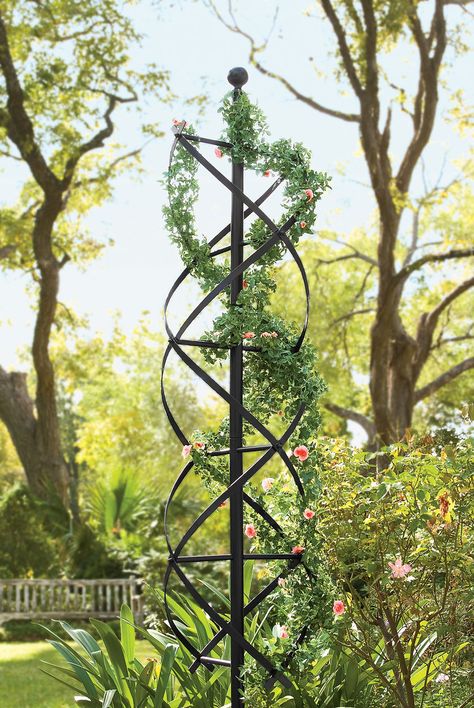
Let’s explore the basic trellis designs, ancestors of all other modern trellises!
Pole and Wire Trellis
If you are not looking to achieve aesthetic perfection, the simplest forms of trellis will do the job. Yes, they will be unsightly until the vines grow over them, but there’s your additional motivation to nurture healthy, lush plant growth.
Trellis made of poles and vertically stretched rope or wire are traditionally used to support grape vines. For something that takes little effort to build, they are very lasting – the old vines on my family property still grow over the pole & metal wire trellis my grandfather made!
“TeePee” Pole Bean Trellis
The same as the example above, these trellises are not here for looks, but for function – although their shape itself has a certain charm. They are a classic for growing beans and peas, but naturally, can be used to grow any other gentle creeper.
As you can judge by the photo, they are very easy to make – three sturdy poles are dug into the ground in a triangular pattern.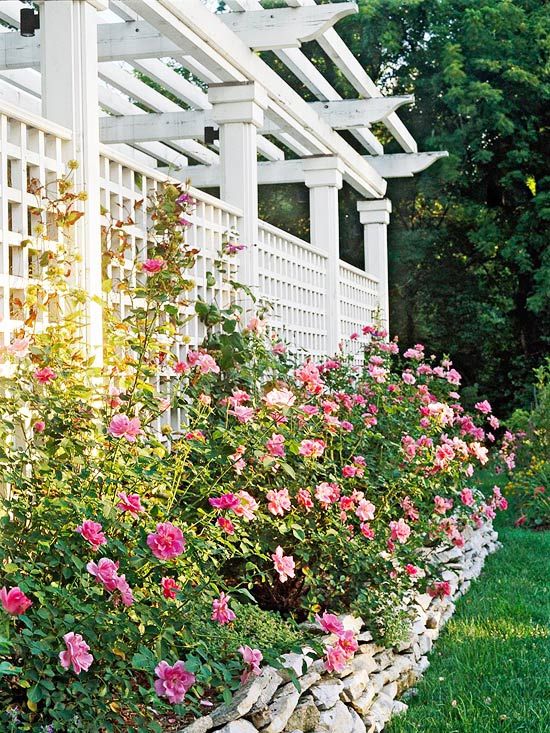 Then the tops are leaned towards one another and tied together with a wire or a rope. The wire then descends towards the base of the trellis by being wrapped around the construction – providing horizontal lines for plants to latch onto.
Then the tops are leaned towards one another and tied together with a wire or a rope. The wire then descends towards the base of the trellis by being wrapped around the construction – providing horizontal lines for plants to latch onto.
“Tent” Veggie Support Trellis
If you have more climbing crop plants, consider this one. An “upgrade” of the previous design, these “serial” triangular trellis use similar logic, but in a more organized, space-saving way.
A lot like a tent base, it has wires coming down from the upper wooden pole axis along the entire length of it, creating a larger surface for vertical plant growth.
The Two-Side Garden Trellis
This one is also a garden classic. Made to fit the raised bed, the two-part tent-shaped wooden trellis will provide to support for whatever creeper you are growing beneath it.
The design is simple – if you want to make it yourself, it will likely be a one-day project. These trellises are often used in vegetable gardens.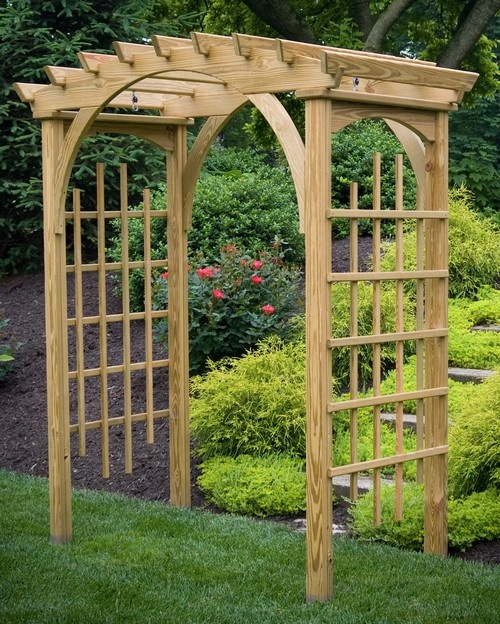
Mesh Trellis
Because of their banality, wire mesh trellis is probably the most unsightly on the list – when bare. However, they can turn into a beautiful spectacle if you are growing dense creepers to grow over the entire construction.
Mesh can be used to imitate pergolas for very little money – and they can look awesome when they are overgrown with greens!
Repurposed Curtain Rod Wall Trellis
This trellis was created by crossing a few old, antique-looking curtain rods and fixing them to an outer wall. Really simple right?
The espalier vine that it will support looks happy with it. And as you can see, even when bare, the entire composition looks charming.
Rustic “Spider Web” Wall Trellis
Located above a grow bed next to a charming rustic English cottage this plant bed is simple to construct. Unlike a regular square shape, this one is shaped like a piece of a spider web.
The trellis doesn’t span over the entire wall. That is useful in two cases – when you want to limit the growth of your creepers, or when you are growing vines that are annual and not particularly dense (e.g., morning glory) and you don’t want to look at an entire wall of bare trellis for many months.
That is useful in two cases – when you want to limit the growth of your creepers, or when you are growing vines that are annual and not particularly dense (e.g., morning glory) and you don’t want to look at an entire wall of bare trellis for many months.
Wagon Wheel Trellis
Here’s one fully upcycled trellis – it is actually a cleverly repurposed antique wagon wheel, attached to the ground in the middle of the growing surface.
If you can’t find a wagon wheel, you can use a much more easily available bike wheel – or a combination of several bike wheels.
Repurposed Garden Tools Trellises
This project by Sadie Seasongoods is charming, affordable and easy. Besides the cute looks, there is more wisdom to using old garden tools – they often have high-quality poles which will make a sturdy base for your plants.
Since vertical boards are tied with a rope to connect the garden tools, this project doesn’t require use of tools – not even a hammer.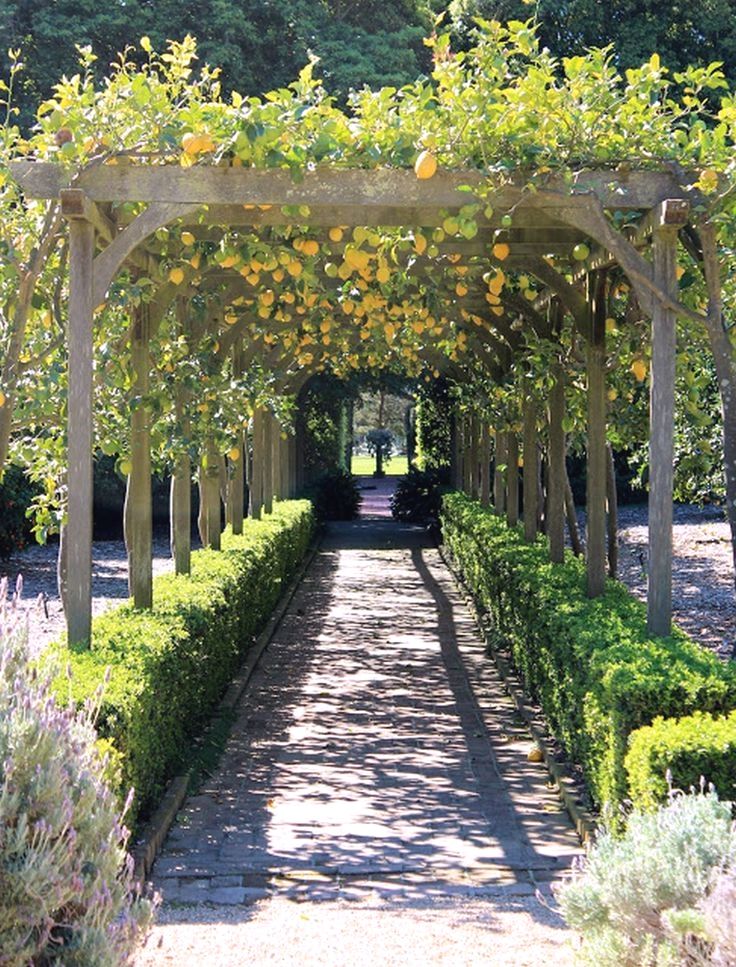
Circular stand-alone Trellis
Trellis don’t always have to lean against bigger surfaces or be straight. This circular garden trellis is a simple metal stand-alone structure – and refreshingly it creates an arrangement in the midst of a lawn.
This particular arrangement consists of clematis vine climbing the trellis, with red begonias in full bloom beneath them in the middle, providing both rich green and colorful appearance. The looming clematis plant borrows some unusual lushness to common begonias, and in return, begonias with their vivid reds in non-stop bloom throughout the season make up for the currently flowerless clematis.
Bamboo Grid Trellis
Bamboo Trellis will provide the same function as the classic wooden grid square trellis (check out the next section). However, it is easier to do-it-yourself, because it uses knots (instead of drilling, sawing, and hammering) to secure the bamboo poles in place and create a shape of the trellis.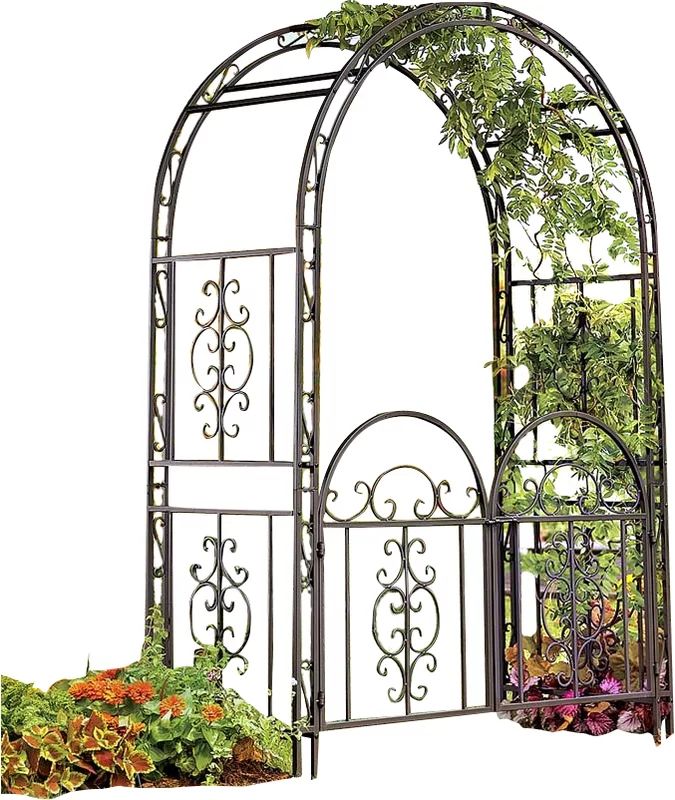
Category: Medium
Our “Medium” category will showcase trellises that can be both bought for a reasonable amount of money, or made with a bit more effort, depending on your resources and preferences. There are many classic designs, as well as some unusual ones.
Classic wooden lattice trellis around windows
This is probably one of the most classic images of trellis – simple square grid surrounding the windows, promising a stunning view once the vines cover the entire trellis.
This type of classic trellis is commonly bought, but it can also be made with a bit of patience, right tools, and proper measurements.
French Tuteur / Obelisk Trellis
A crossover between the teepee pole trellis and the two-sided trellis – only slightly more sophisticated. Although it has more elements, the French tuteur “obelisk” is still compact enough to become a part of smaller garden space, giving a lot of vertical growth space for a relatively little piece of ground.
It is not very difficult to do the DIY version of this trellis either.
Trellis Fence, 2-in-1
Making an entire fence out of trellis (lattice) gives you an excellent opportunity to create completely unique fencing for your yard. The sturdy construction can is excellent for supporting roses, blackberries, English ivy or other medium vines.
Just one catch – don’t let your vines grow over the lattice-type gate – if you happen to be absent for long enough, you won’t be able to get into your property!
Artistic Welded Metal Trellis
This beautiful artistically welded metal trellis, fixed to a tall wooden fence is a beautiful addition to a garden – especially the one with a rustic feel. Even if nothing ever grows over them – they are worthy on their own.
You can have similar pieces custom-made by an artistic welder (or do it yourself if you are one). The other option is to look at the second-hand ones in ads, garage sales or junkyards. Other welded objects can be repurposed to become trellises.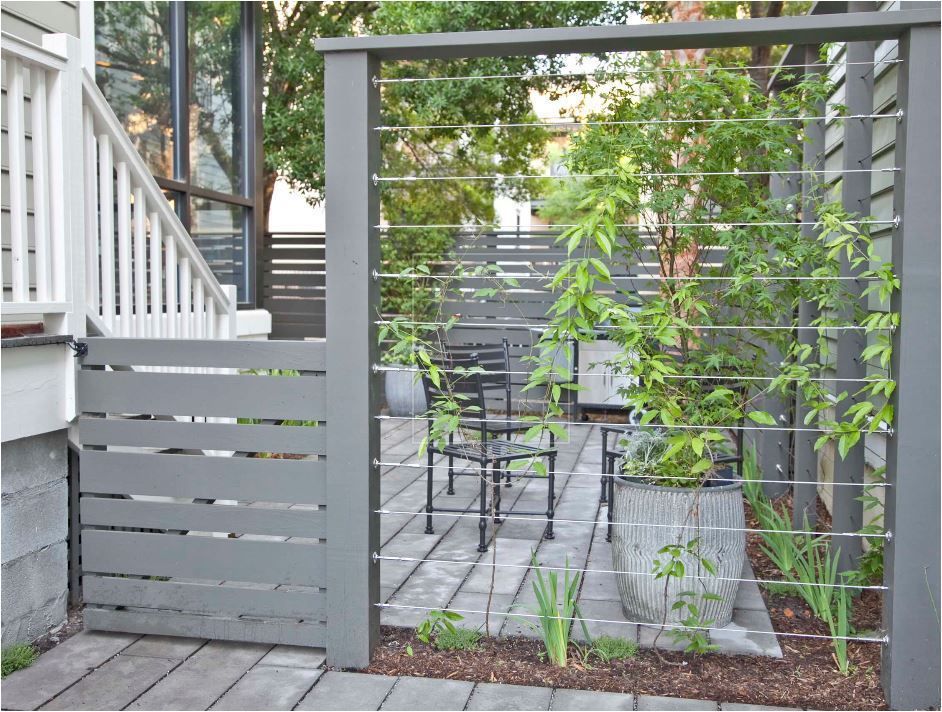 This particular one in the picture quite looks like a piece of a small, old gate.
This particular one in the picture quite looks like a piece of a small, old gate.
Non-Square Trellis
Since square and rhomboid trellises are a gold standard, as anything so typical, the shape can get a bit boring for some people.
Fortunately, you are not limited to typical designs only. Here is an example of combining different geometric shapes to create an extraordinary trellis, which will support your plants equally well.
Another popular option is to make angled trellises, such as this “chevron trellis.”
Arched White Trellis/Arbor with Roses
Arched “gate” trellis is a classic for supporting creeping rose variety. The white color of this trellis perfectly corresponds to the gentle nature of rose flowers.
Contrary to its looks, this type of trellis doesn’t have to be located on the entrance to the garden. It can be used to visually.
Because of the height, many straight lines and the arches, the complexity of making a trellis like this one would land it in our Advanced category.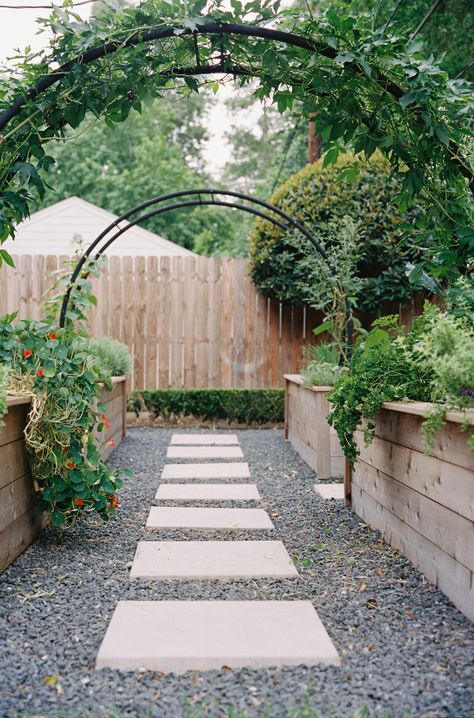 The price in the range of $100-$150 is not out of range for most garden owners.
The price in the range of $100-$150 is not out of range for most garden owners.
Birch Tree Wedding Trellis
Besides support for plants, trellises are commonly used as centerpieces in weddings – a structure below which a lucky couple will take its precious vows.
Although wedding trellises can get complex, here is one simplistic, natural, rustic idea – a minimalist construction made out of raw birch trees and branches, “rooted” in flowerpots.
The natural white color of the birch tree makes the trellis look special and in tune with the wedding tradition of using white color for decoration.
Just be warned: this design may not be perfectly suitable for windy locations!
Simple Metal Trellis
Commercially made metal trellises are now commonly available at garden centers, larger stores such as Wallmart, or online. Over the years they have become quite affordable.
This design is really minimal, with no standard art-nouveau vine-like curves – although there are many of those available as well if you prefer those.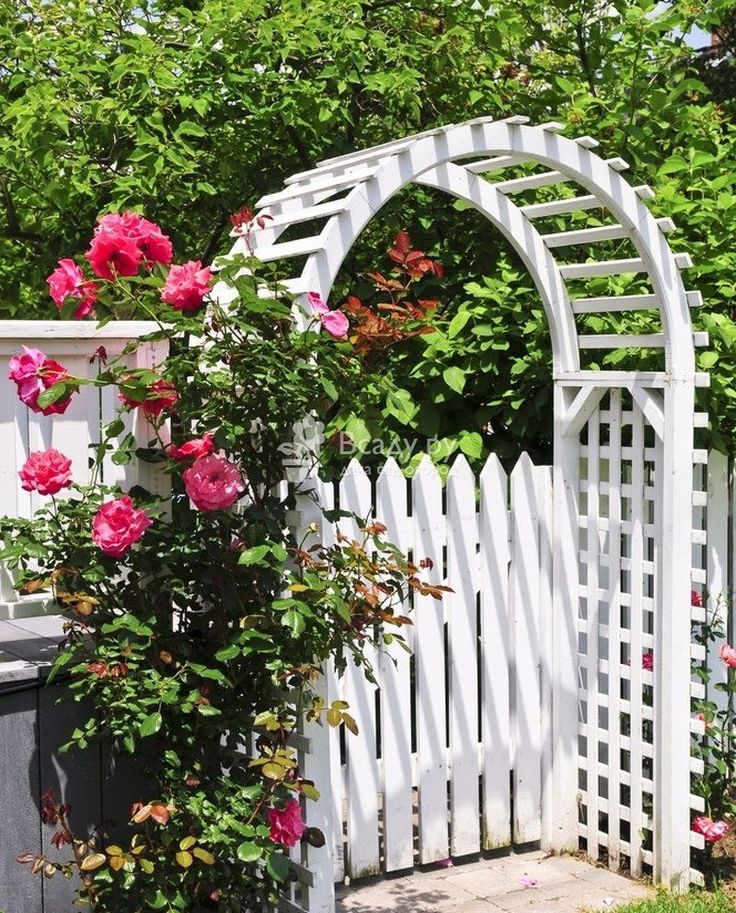
Category: Advanced
The size is a big part of what makes these trellises “Advanced.” Within this category, you will find arbors and pergolas, trellis gates and tunnels which represent a major investment, but also a striking, long-lasting decoration which will shape your entire garden.
Because of their complexity, these trellises are often bought or professionally custom-made.
Large Trellis Fence
This garden has been entirely fenced out by a large trellis, giving its owner an opportunity to create a living wall that divides the garden from the rest of the yard.
The only thing to be careful about is the sun – if you have a tall, dense wall surrounding your garden, that might decrease the exposure for your plants, especially in the months when the sun is low.
Bamboo Garden Trellis / Simple Pergola
Here is the simplest trellis arch (or pergola), that because of its sheer size still has to be in the Advanced category.
This trellis is not truly arched but creates more of a roof-like structure over the garden walkway. It sort of reminds of the giant version of a simple two-sided garden trellis I’ve described earlier. Because of that, it easier to make by yourself and a group of friends that most other trellises/pergolas on the list (though it’s still not easy!).
It sort of reminds of the giant version of a simple two-sided garden trellis I’ve described earlier. Because of that, it easier to make by yourself and a group of friends that most other trellises/pergolas on the list (though it’s still not easy!).
White Arched Wooden Trellis
The image of this arched trellis going over the garden patio was taken in a public rose garden, which says enough about what it’s fitting for. It can stand heavy vines creeping over it, plus it has a very elegant aesthetic – just like a rose.
Because of its size and craft, building a trellis like this one is expensive; however, because of the same features be sure it is something that will last for more than a generation, making it a wonderful gift for future generations in your garden.
Asymmetrical Wooden Trellis
This custom trellis/arbor is interesting because of its atypical, asymmetrical shape. If you imagine it with vines over it and compare it with standard square shaped or arched arbors, you will easily realize how this design brings some originality into trellis and landscape design.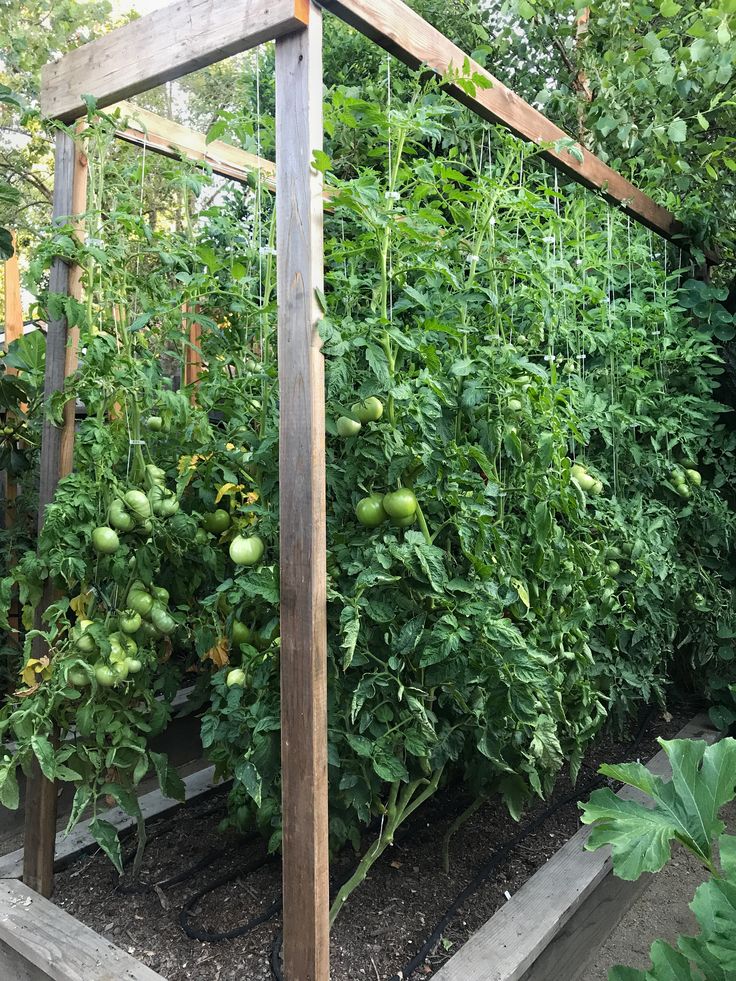
The shape makes it suitable for modern, minimalistic, Japanese, or other Asian-style gardens.
Japanese-Style Bamboo Trellis or Pergola
Unlike our first example in the Advanced category, this complex natural bamboo is truly arched and wraps an entire path through the garden, creating a wonderful tunnel. In the picture the construction is bare, but it’s not difficult to imagine how impressive would it look when covered in vines.
Needless to say, a trellis of this size is very complicated, or expensive, to construct. Still, if you are short on resources, be it money, time, or skill, it can provide an inspiration to create a smaller, gate-like version using the same natural materials.
The picture is taken by using the infrared technique, so don’t worry – in reality, this trellis won’t make your greens purple!
Antique Iron Trellis and Arbors
Since trellises and arbors have been around for a long, long time, with some luck, you might be able to find antique wrought iron trellis that doesn’t cost a fortune.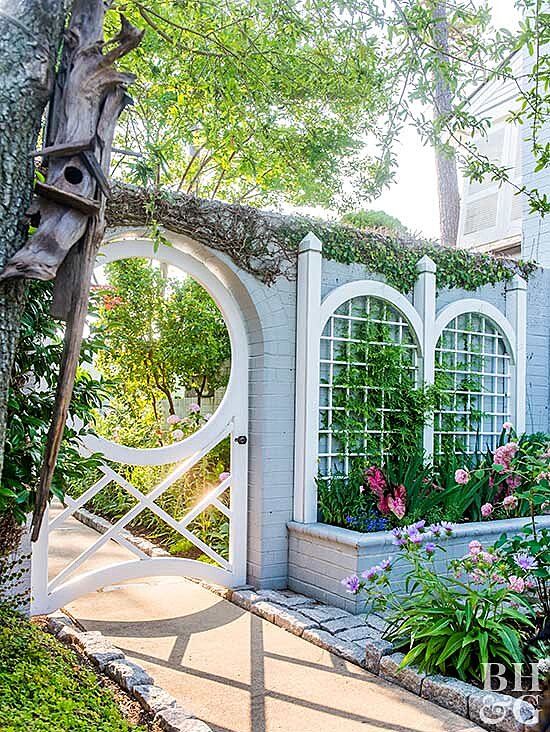 How?
How?
Well, sometimes the owners are not really aware of what are their old trellis is really worth, or they don’t have time to find the right buyer, or they have assessed that the construction is in really bad shape. That is why it might end up in a junkyard.
Finding your trellis at the junkyard can be a real adventure. If you don’t find a classic like the one in the picture, you may come across other interesting objects (see the wagon wheel idea above) that can serve as a trellis.
Conclusion
Big or small, metal or wooden, home-made or store-bought, one thing is sure: besides providing support for your beautiful creeping plants, trellises will shape your entire garden. They can add the finishing touch that will make your green space stand out from all others.
Was my trellis list useful to you? Has it broadened your perspective when it comes to understanding the garden trellis universe? What kind would you like to have in your garden? Feel free to drop a comment – we would love to hear your thoughts on it!
22 Best DIY Trellis Ideas
susandanielsGetty Images
Beloved by gardeners and greenskeepers around the world, the trellis is a mainstay of the gardens everywhere—the bones upon which the garden grows.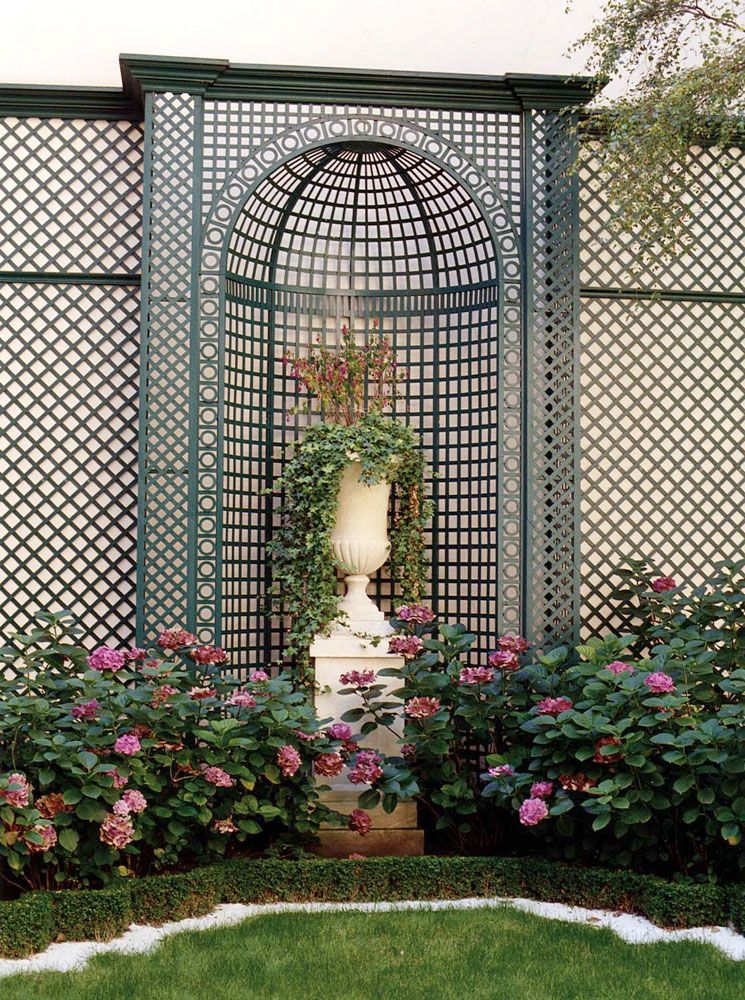 They can take many forms and serve just as many functions, from simple structures meant to merely keep vining veggies from crawling across the dirt, to far more elaborate, studier designs that give shape and beauty to back patios, add a splash of floral color to otherwise plain walls, or provide shade and privacy to pathways.
They can take many forms and serve just as many functions, from simple structures meant to merely keep vining veggies from crawling across the dirt, to far more elaborate, studier designs that give shape and beauty to back patios, add a splash of floral color to otherwise plain walls, or provide shade and privacy to pathways.
If you're just looking for a basic trellis, you can often get away with simply buying a great trellis online or at your local garden store. But sometimes you want something a little more personalized—or cheaper. That's when it's worth taking (a small amount of) time to design and build your own trellis. To help you envision the perfect structure for your climbing plants, we've rounded up the best trellis projects from around the web, to match a wide variety of styles and purposes, from purely functional to easily elegant.
Trellises, which often seem undeniably romantic, are a safe bet for inclusion in every great garden in the world. But it’s not necessary to pay a fortune for a beautiful, functional trellis.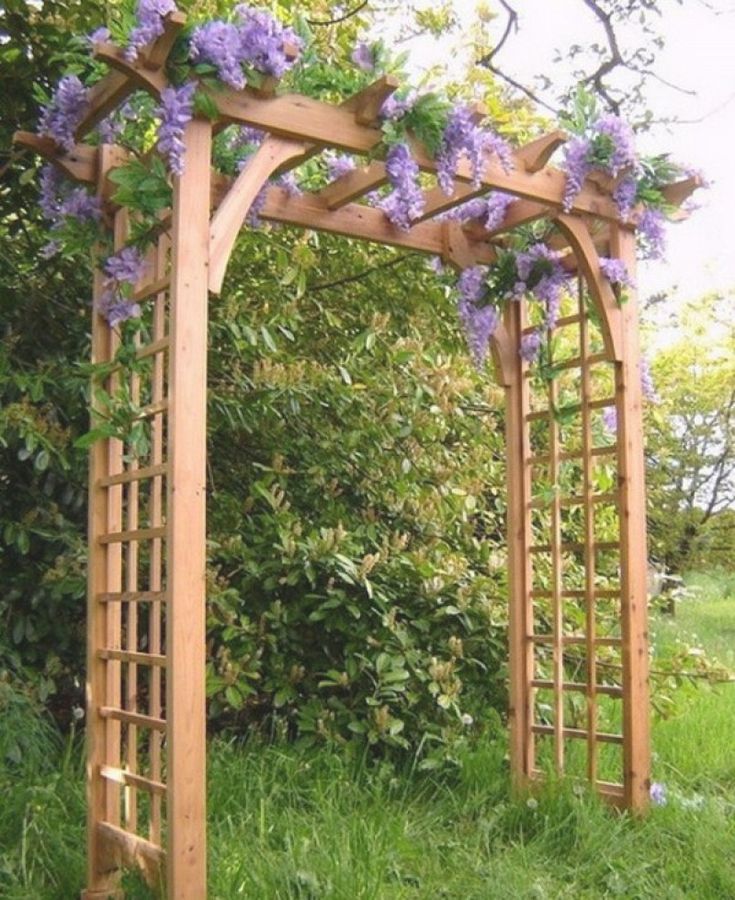 Whether you’re dreaming of an uncomplicated little support system for growing peas, or a stunning arbor laden with blooms that arches overhead, chances are, you can make it yourself—especially with the help of the following DIY trellis ideas. (And don't forget to check out our best landscaping ideas and backyard ideas.)
Whether you’re dreaming of an uncomplicated little support system for growing peas, or a stunning arbor laden with blooms that arches overhead, chances are, you can make it yourself—especially with the help of the following DIY trellis ideas. (And don't forget to check out our best landscaping ideas and backyard ideas.)
A Piece of Rainbow
1 of 22
DIY Pergola
Pergolas, also known as trellises and arbors, can be used not only as a support structure for crawling vines, but also to define outdoor spaces and create cooling shade. Before building yours, be sure to call your utilities offices and note the location of underground lines. You’re going to need to sink the footing to one-quarter the height of the post.
Get the tutorial at A Piece of Rainbow.
SHOP TIE CONNECTORS
Chicken Scratch NY
2 of 22
T-Post Trellis
This sweet, rustic little trellis can be made from simply two T-posts, poplar sapling twigs, and twine, though you can use zip ties instead of the latter for added strength.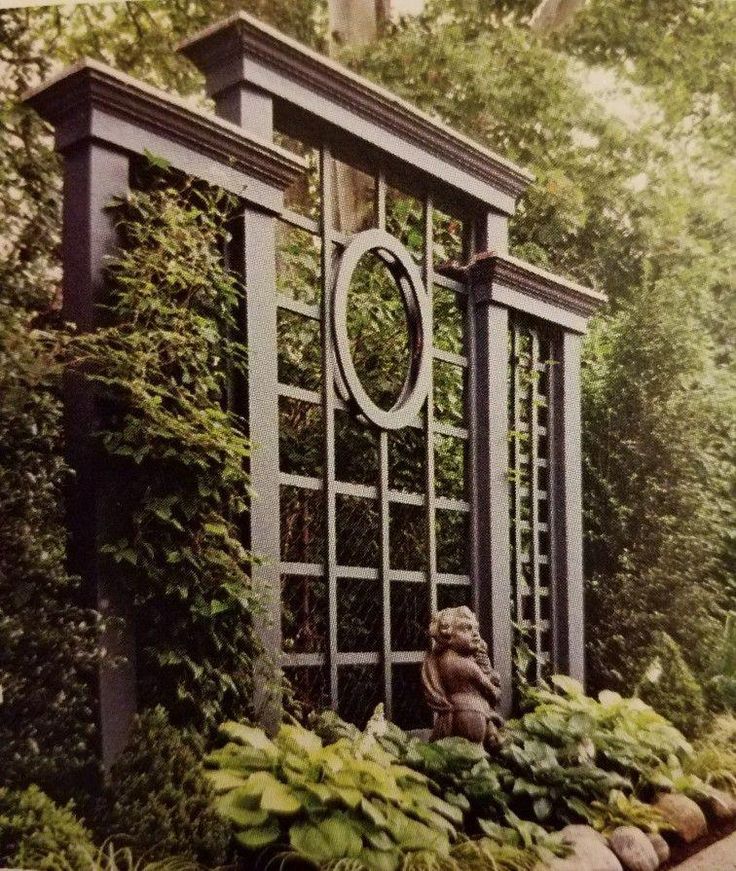 Use bigger branches on the bottom and smaller ones up top, alternating the thick ends on each row.
Use bigger branches on the bottom and smaller ones up top, alternating the thick ends on each row.
Get the tutorial at Chicken Scratch NY.
SHOP ZIP TIES
Mama Needs a Project
3 of 22
Honeycomb Trellis
Lovely in itself, this hexagon-shaped honeycomb trellis will add serious zing to your property. Use a miter saw to make the hexagonal cuts, then mount the trellis onto a fence, making sure it screws into all the horizontal supports.
Get the tutorial at Mama Needs a Project.
SHOP MITER SAWS
HandyDadTV
4 of 22
Fancy Trellis
This beautifully made trellis is suitable for showing off at the entrance to your home, especially draped with a flowering vine like clematis. Be sure to use pressure-treated lumber and a stain/sealer so it stands the test of time.
Get the tutorial at HandyDadTV.
SHOP STAIN AND SEALER
The Handyman's Daughter
5 of 22
Cedar Board Clematis Trellis
Just about everybody loves the privacy tall fences bring, but they can also look fairly uninspiring. Jazz up your backyard barrier with a clematis trellis that will give flowering vines the support they need to climb high. For this project, cedar boards cut into short, 1 ½-inch-wide strips make the perfect trellis material.
Jazz up your backyard barrier with a clematis trellis that will give flowering vines the support they need to climb high. For this project, cedar boards cut into short, 1 ½-inch-wide strips make the perfect trellis material.
Get the tutorial at The Handyman’s Daughter.
SHOP NAIL GUNS
Salvaged Living
6 of 22
Wire Wall Trellis
Shouldn’t all brick walls have at least a few vines crawling over them? You can help get picturesque greenery going on your brick with this wire trellis, which uses masonry anchors, eye hooks and cable wire to create a foundation for your plants to cover.
Get the tutorial at Salvaged Living.
SHOP DRILL BITS
Deuce Cities Henhouse
7 of 22
Fir Board Trellis With Planter Box
Two projects in one, this trellis is mounted inside a handy planter. Even better, the box has casters mounted on the bottom, making it easy to move. Along with the casters, be sure to add drainage holes to the bottom of the planter to keep your plants healthy.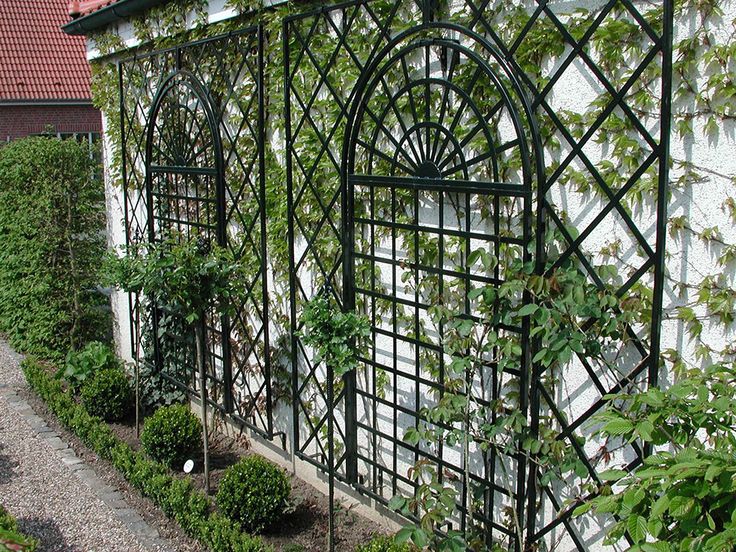
Get the tutorial at Deuce Cities Henhouse.
SHOP DRILLS
33 Shades of Green
8 of 22
No-Weld Copper Trellis
You don’t need to be able to weld to assemble this delicate copper pipe trellis—just be sure have some Gorilla Glue at the ready. And think how lovely that copper will look draped in vines when it begins to weather to a pale green patina.
Get the tutorial at 33 Shades of Green.
SHOP GORILLA GLUE
Ashbee Design
9 of 22
Rustic Birch Trellis Ladder
Whether you’d like to use this homey ladder as a true trellis, or as a support system for pails of posies and other seasonal decorations, it will be a lovely addition to your porch or patio. Craft it from black birch saplings or the limbs of other visually unique trees to give it extra appeal.
Get the tutorial at Ashbee Design.
SHOP PRUNING SHEARS
Centsational Style
10 of 22
Crisscross Wall Trellis
This elegant crisscross trellis can be used in the most formal of outdoor spaces to support climbing foliage like pink bower vines.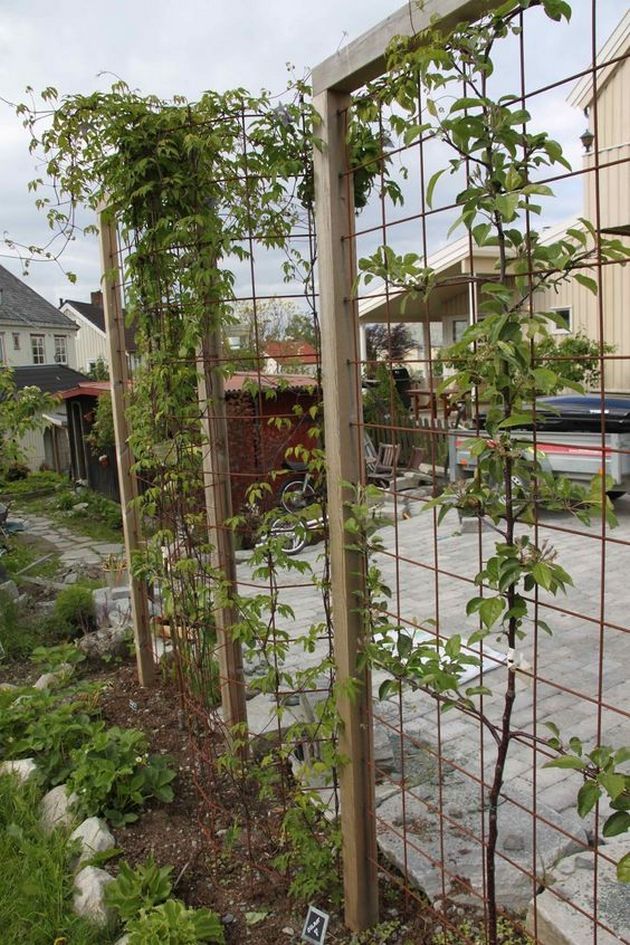 If you have a fountain or artwork you’d like to highlight, think about leaving out the center “X” and placing the piece within the space, using the trellis as its frame.
If you have a fountain or artwork you’d like to highlight, think about leaving out the center “X” and placing the piece within the space, using the trellis as its frame.
Get the tutorial at Centsational Style.
SHOP STAPLE GUNS
Ellen Ogden
11 of 22
Rustic Sapling Trellis
Whimsical and deeply charming, this trellis is made with green saplings, which are bent into a hoop shape and wedged between large rocks for about two weeks, until they’re dry. The ends are then placed in wood inserts buried in the earth at either side of the walkway, the saplings lashed together with jute twine for extra stability.
Get the tutorial at Ellen Ogden.
SHOP JUTE TWINE
Flower Patch Farmhouse
12 of 22
DIY Garden Obelisk
You can use this simple, cheery obelisk for everything from a tomato cage to a trellis for roses, depending on your needs. Easily assembled out of pine, it can be topped with a weather vane, or coated with protective tung oil instead of paint.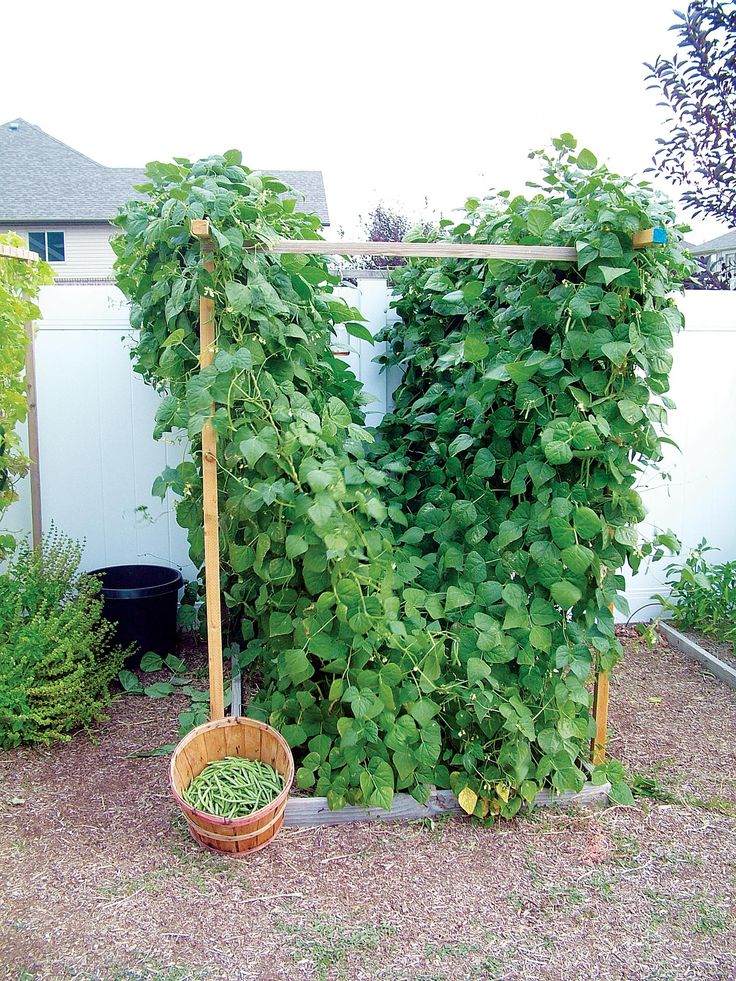
Get the tutorial at Flower Patch Farmhouse.
SHOP TUNG OIL
Frugal Family Home
13 of 22
Cattle Panel Trellis
A perfect space saver for those of us with little room to garden, this clever trellis made from metal cattle panels enables you to grow goodies like cucumbers, pole peas, and beans up instead of out. After trimming and halving the panel, use hog rings or cable ties to join them. This trellis saves space in the winter as well, by folding flat for storage.
Get the tutorial at Frugal Family Home.
SHOP HOG RINGS
Garden Therapy
14 of 22
Easy Twine Pea Trellis
Kids will love to lend a hand making this adorable, tiny trellis for pea plants. After building the frame out of four bamboo poles joined by twine, run the twine up and down the frame, keeping it taut. With a little coaxing, the pea tendrils will take to the twine just fine.
Get the tutorial at Garden Therapy.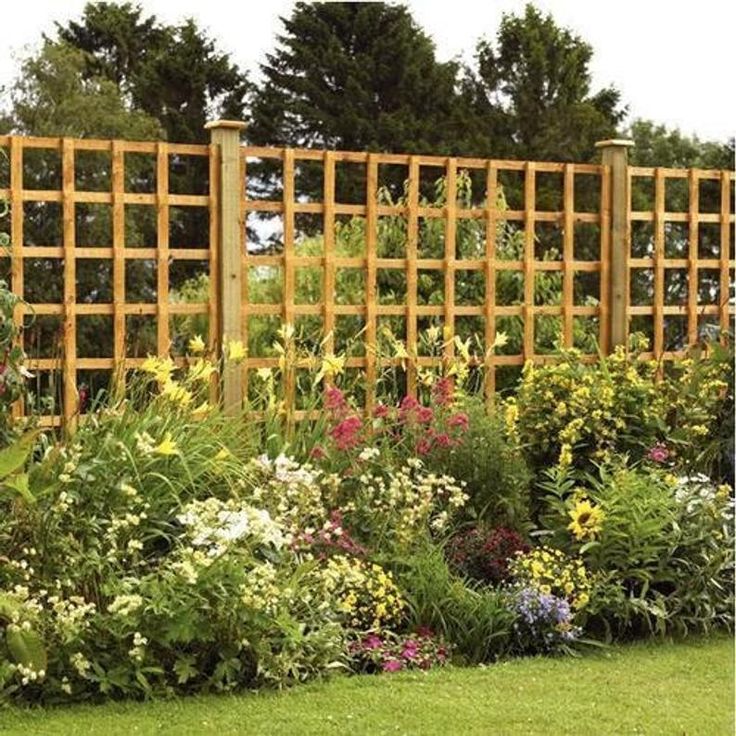
SHOP GARDEN TWINE
Hydrangea Treehouse
15 of 22
DIY Freestanding Trellis
Easy, efficient, and, at less than $10 for materials, incredibly cost-effective too—this trellis is built from just four 1 in. x 2 in. x 8 ft. furring strip boards, glue, and brad nails. You can customize the size to suit the needs of your garden as well.
Get the tutorial at Hydrangea Treehouse.
SHOP FURRING STRIP BOARDS
Jen Gilday Interiors
16 of 22
Pea Trellis
Perfect for peas or any vining plant, this five-foot-tall trellis can also be built shorter or higher, depending on your needs. For slightly sturdier, thicker trellis, as seen here, you can use 2 in. x 2 in. boards.
Get the tutorial at Jen Gilday Interiors.
SHOP NAIL GUNS
Jenna Sue Design
17 of 22
Trellis Wall
Pretty as a picture even without bougainvillea creeping over them, these expandable wood trellis panels create visual interest where there was once only a blank wall.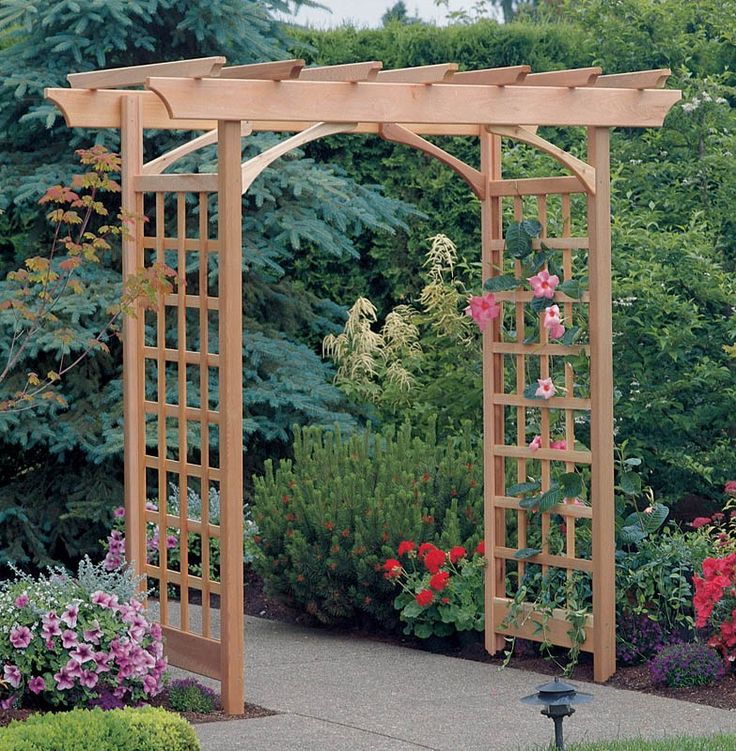 If you’re planting something as leafy as bougainvillea, make sure to hang the trellises several inches from the wall, so the vines have space to grow around and through them.
If you’re planting something as leafy as bougainvillea, make sure to hang the trellises several inches from the wall, so the vines have space to grow around and through them.
Get the tutorial at Jenna Sue Design.
SHOP HAMMERS
Love Grows Wild
18 of 22
DIY Trellis Planter
Practical, but smart-looking, these trellises will add weight and structure to your patio or porch. You can make the build faster and easier by using pre-fabricated latticework, but think about adding a frame made with 2 x 2 pressure-treated lumber around the trellis to give it a more finished look.
Get the tutorial at Love Grows Wild.
SHOP CIRCULAR SAWS
Lovely Greens
19 of 22
Pallet Cucumber Trellis
Get your cukes off the ground and away from insects and diseases found in the soil with this quick, easy trellis made from a wood pallet. No tools are required—just bailing twine and two posts—and you can even plant another row of crops like lettuce and radishes underneath the pallet.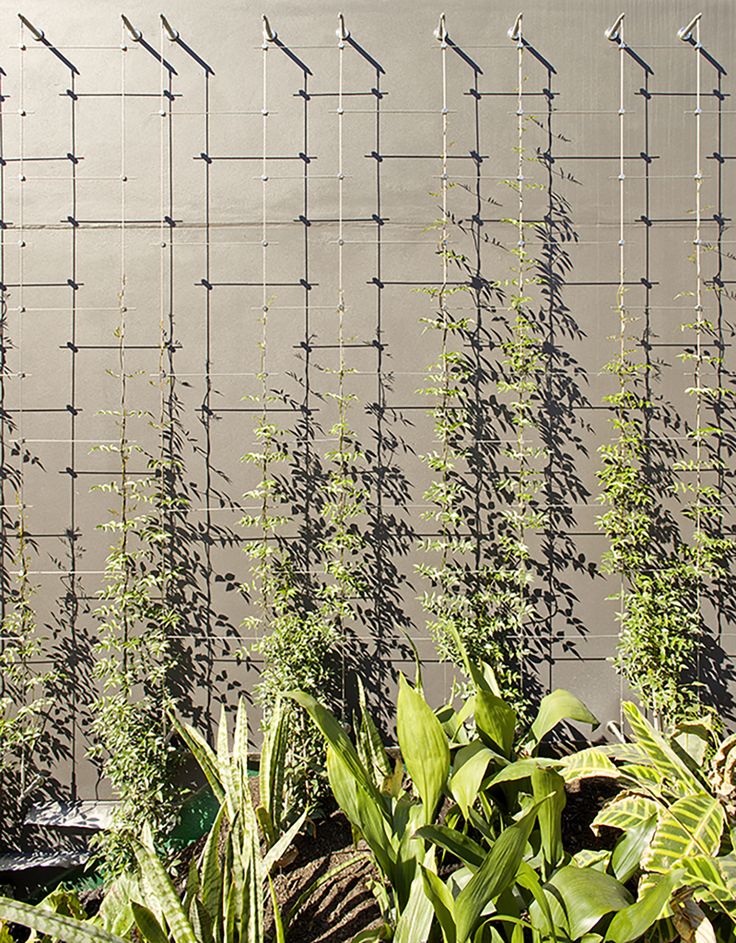
Get the tutorial at Lovely Greens.
Remodelaholic
20 of 22
Chevron Lattice Trellis
Using the eternally stylish chevron shape for lattice is genius, guaranteeing your garden will have a slightly modern flair—especially if you spray paint the trellis black. Add clay flower pots to the trellis with zip ties.
Get the tutorial at Remodelaholic.
SHOP MEASURING TAPES
Sadie Seasongoods
21 of 22
DIY Garden Tools Trellis
This playful trellis doubles as garden art and is a good use of broken or worn-out tools like rakes, hoes, shovels, spades, and the like. Simply shave down the ends of the tools into a stake shape, then attach cross slats made from sealed scrap wood using glue or a nail gun. Finish with jute twine at the connection points. The more weathered the sculpture becomes, the more its charm increases.
Get the tutorial at Sadie Seasongoods.
Yellow Brick Home
22 of 22
Modern Trellis
Sleek and slim, these trellises offer simple, unfussy lines that contrast nicely with the heavier, more traditional raised planters installed beneath them.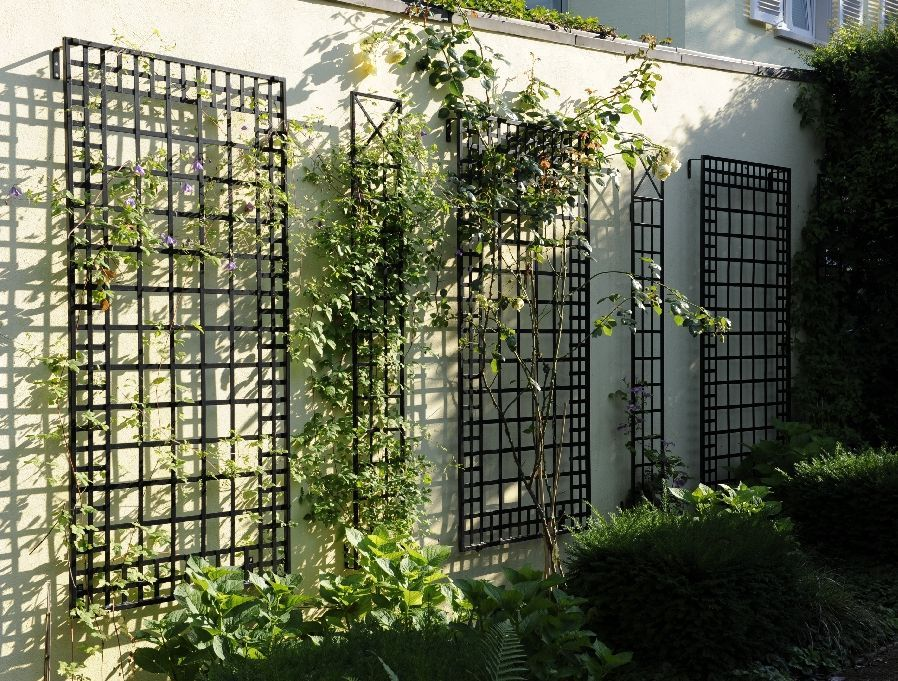 You can keep the look clean and bright by using two coats of an exterior semi-gloss paint; for extra ease, use a sprayer.
You can keep the look clean and bright by using two coats of an exterior semi-gloss paint; for extra ease, use a sprayer.
Get the tutorial at Yellow Brick Home.
SHOP PAINT SPRAYERS
Do-it-yourself plastic mesh fence
Traditional fences made of wood and metal corrode and rot over time, thus giving an unaesthetic appearance to any garden plot. Such enclosing structures require constant care, costs, repairs, but in the end this still does not give summer residents a guarantee that such fences will last a long time.
Plastic is the best replacement
Plastic fence grates are today a suitable replacement for fences made of wood and various types of metal. The mesh is used to produce quickly assembled plastic fences. In addition, these are not necessarily decorative fences and fences for flower beds, but also durable enclosing structures that are not inferior in strength to wooden structures. A fence made of plastic mesh, the material for which is offered by all construction companies, is convenient and functional.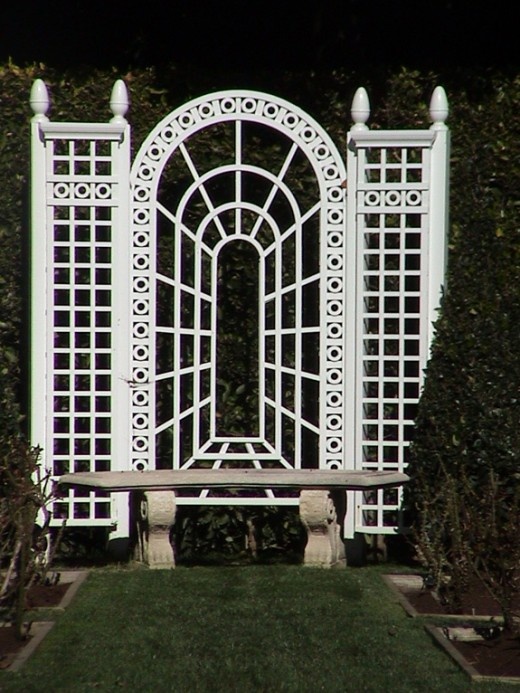 It can simultaneously perform a protective and decorative function.
It can simultaneously perform a protective and decorative function.
Which type to choose
You can install chain-link mesh, garden grating or emergency plastic mesh on your property. The most versatile and attractive option is the garden trellis. It is considered a popular, beautiful element of country decor. Although this lattice is not used to mark the outer boundaries of the site due to its low strength, it harmoniously frames the inner areas.
It is quite possible to build a strong protective structure with metal fasteners from a chain-link mesh, it is resistant to weather conditions and is able not to bend under small weights.
An emergency plastic fence in a catchy color is placed to limit construction work or on sports courts. It serves to warn others about a possible danger in a limited area. When buying, you need to pay attention to the size and shape of the cells, the thickness and width of the web, the level of rigidity, which will certainly affect the complexity of the installation.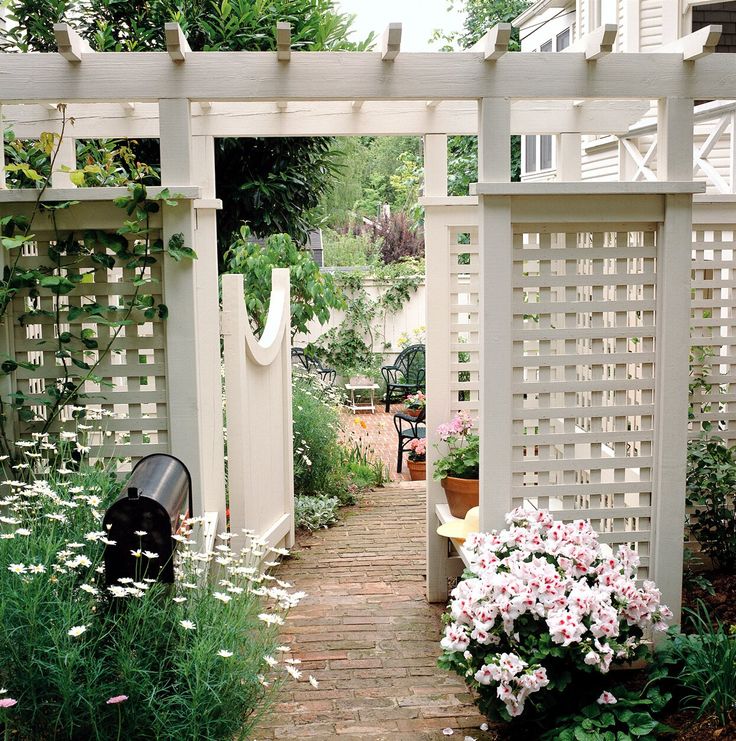
Smaller cages are best for aviaries because they have less capacity. The color depends on the overall design of the site and the purpose for which the fence will be installed. Typically, stores offer the following colors: khaki, green, brown, gray and red. In the garden, it is best to put a green fence. For the aviary, you can use a gray mesh, and for framing bright plants - red.
Disadvantages and main advantages
What are the advantages of plastic fence mesh? Let's take a look at the main benefits. First of all, it is highly reliable and does not require careful maintenance, does not corrode or rot, is resistant to precipitation (does not lose its properties from -50 to +80 degrees), and is easily subject to division. It is easy to continue the fence canvas - just fasten the next sheet to the previous one, and the junction will be invisible.
If a separate part of the fence is damaged, it can be repaired without dismantling the entire fence, wicker fences made of rods do not have this advantage. In addition, the fence grate looks very attractive, it is light in weight, and is produced in all sorts of colorful options. Thanks to this, you can create original fences for fencing individual sections of your territory or a plastic fence to protect the site, corresponding to any taste preferences.
In addition, the fence grate looks very attractive, it is light in weight, and is produced in all sorts of colorful options. Thanks to this, you can create original fences for fencing individual sections of your territory or a plastic fence to protect the site, corresponding to any taste preferences.
Environmentally friendly raw materials are used for the production of the material. The service life of structures is up to 40 years. A plastic mesh fence is easy to clean with water, is flexible, durable, allows light and air to pass through. It is easy to transport and install. Making a plastic mesh fence with your own hands (you can see a photo of some examples in the article) is quite realistic. Of the minuses, one can single out full visibility due to hollow cells and low protective ability. Compared to a chain-link fence, a plastic mesh fence will cost more.
What you need for installation
To install a plastic mesh fence, you need to have wooden or metal poles.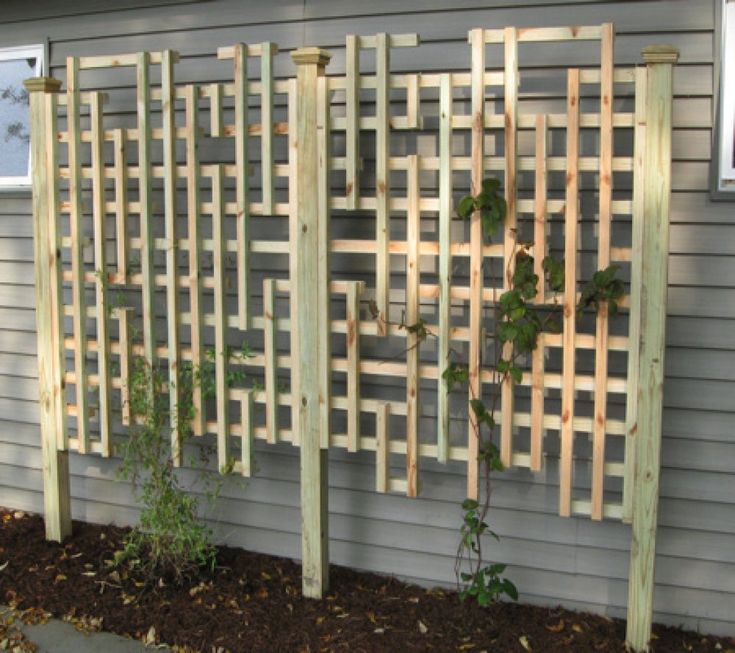 The plastic mesh is quite light, it does not require too hard and heavy support. Construction tape will be needed to measure the distance between the supports. You will also need a cable or metal wire to stiffen the structure, they are located at the bottom and top. You can secure the grate with elastic bands, which are sold at any hardware store. And, of course, you need an ordinary garden pruner. The plastic fence is erected within the shortest time.
The plastic mesh is quite light, it does not require too hard and heavy support. Construction tape will be needed to measure the distance between the supports. You will also need a cable or metal wire to stiffen the structure, they are located at the bottom and top. You can secure the grate with elastic bands, which are sold at any hardware store. And, of course, you need an ordinary garden pruner. The plastic fence is erected within the shortest time.
Installation process
To make a plastic mesh fence with your own hands, you first need to install the support posts at a distance of two to three meters from each other, and before that mark the right places. Since the fence is very light, there is no need to drive the supports deep. Then you need to unwind and attach the mesh to them using plastic or metal clamps and, gradually pulling the grate, fix it with clamps on the supporting pillars. It is important to stretch evenly. The rest of the grid on the pole must be cut off with a garden pruner, after which, in the same way, you need to get rid of the tails of the clamps.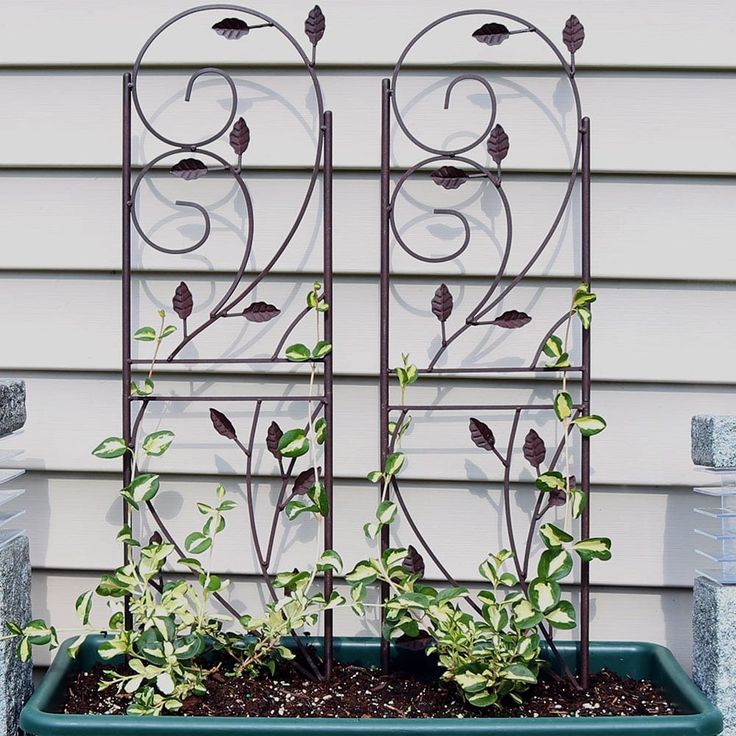 To give the structure strength, you can fix the upper or lower edge of the lattice with a wire or a metal cable, wrapping its end around the support post. Reinforcing cages, if desired, are installed 10-15 cm from the edges. Without much effort, time and energy, a plastic mesh fence with your own hands can be installed in half an hour.
To give the structure strength, you can fix the upper or lower edge of the lattice with a wire or a metal cable, wrapping its end around the support post. Reinforcing cages, if desired, are installed 10-15 cm from the edges. Without much effort, time and energy, a plastic mesh fence with your own hands can be installed in half an hour.
Some installation details
During installation work, you may encounter the problem of mesh sagging. Whatever the grate - durable metal made of steel, more flexible aluminum or plastic - it will begin to sag over time anyway. It is also not necessary to stretch the mesh too much so as not to deform its cells. In order to avoid this problem, the mesh needs a frame made of rebar or cable, which is installed at the top and bottom with small indents from the edges and welded to the supports. Such a fence is clearly stronger, heavier and smoother. After that, its service life increases by several years. In the photo of the plastic mesh fence presented above, it can be seen that the fence can stand without any upper and lower fasteners.
Plastic fencing applications
The fence is also used for fencing sports and playgrounds, in agriculture for the construction of pens and aviaries for birds and small animals. The grid can be purchased at any height, in all kinds of colors, with various cell shapes: square, diamond-shaped, etc. Fences that serve to enclose a site are usually one to two meters high. For fencing sites and flower beds inside the site, they can be of completely different heights and shapes, for example, straight or undulating. With the help of such a fence made of plastic mesh, you can decorate any landscape.
Fence mesh reviews
Summer residents and gardeners usually talk about the convenience of their use everywhere. Plastic nets can decorate the walls of verandas and loggias, use them as a delimitation of a vegetable garden and a garden, put them around flower beds. The green plastic fence grate matches the overall look of the garden. Such a fence harmonizes beautifully with any flowers - they stand in them like in a vase, and the plastic mesh cells do not injure the stems.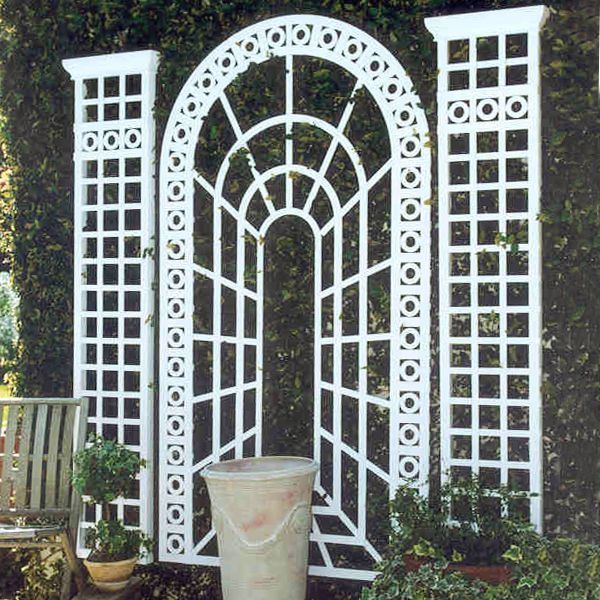 It does not require strong props, it is easy to pull out weeds from under it. Climbing plants are perfectly decorated with a fence made of green plastic mesh: climbing roses, ivy, creepers. A plastic trellis in the garden has a lot of options for use - it would be a fantasy. Such a grid will successfully fit into the design of any suburban area. Also, reviews of the plastic mesh for the fence often note its low cost and environmental friendliness of the material, ease and variety in use.
It does not require strong props, it is easy to pull out weeds from under it. Climbing plants are perfectly decorated with a fence made of green plastic mesh: climbing roses, ivy, creepers. A plastic trellis in the garden has a lot of options for use - it would be a fantasy. Such a grid will successfully fit into the design of any suburban area. Also, reviews of the plastic mesh for the fence often note its low cost and environmental friendliness of the material, ease and variety in use.
How to decorate the structure
Inside a garden or kitchen garden, on the outer border of the plot, a plastic lattice fence can become an independent design element. But in order to make your site seem exceptional, interesting and stand out from the neighboring ones, you can add additional decorative elements. Plants climbing along the cells of the fence will add romanticism and tenderness to garden design. To make the fence seem heavier and stronger, place massive stones at its base.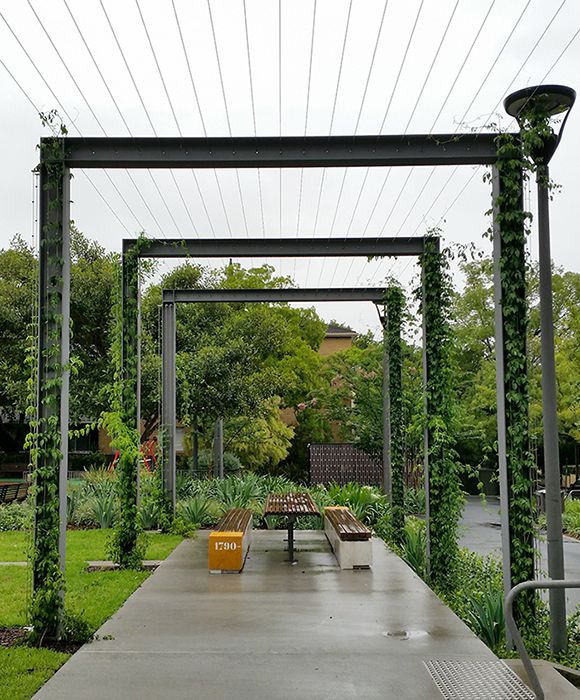 Small artificial flowers can be inserted into the places where plastic clamps are fixed. From the remaining plastic lattice, you can build flower beds and place them side by side. This combination will not leave indifferent every visitor to the site and will give the territory a finished look.
Small artificial flowers can be inserted into the places where plastic clamps are fixed. From the remaining plastic lattice, you can build flower beds and place them side by side. This combination will not leave indifferent every visitor to the site and will give the territory a finished look.
Plastic mesh in the garden - ideas for use
Plastic mesh is increasingly being used in gardens and vegetable gardens. Many owners of suburban areas, instead of heavy metal structures and wooden fences, install neat fences made of polymer materials in their dachas. Unlike metal and wood, plastic does not corrode or rot. The mesh is easy to transport, as the weight of one roll is only 6-7 kg. Such products made of dense polypropylene are resistant to ultraviolet radiation and do not fade in the sun.
Plastic nets differ in their application, width, length, mesh size, strength, color. Depending on the purpose of use, the following categories of such products are distinguished:
- chain-link mesh;
- garden trellis;
- trellis net;
- intake grate;
- mesh tight for protection from birds.
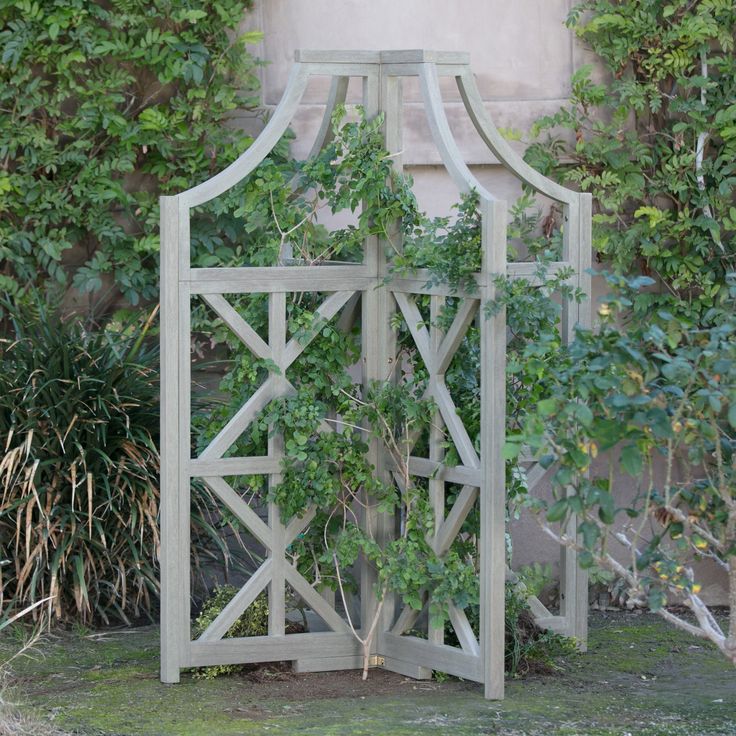
In addition to the listed species, manufacturers also produce a special shading net that protects plants from the heat of the sun.
Methods of application
In household plots, vegetable gardens and orchards, plastic mesh can be used as follows:
- For the construction of fences. This is a great alternative to metal or wood fences. For these purposes, it is convenient to use a chain-link mesh, fence or garden lattice. Such enclosing structures are often installed inside the suburban area during the zoning process.
- As a trellis. The mesh serves as a support and promotes the speedy growth of climbing plants (cucumbers, legumes, grapes). With the help of a trellis or a garden lattice, you can create a hedge of flowers, decorate a gazebo beautifully, create an arch, etc. Therefore, a network of polymer materials is often used to decorate a suburban area.
- For arranging paths in the garden or vegetable garden. If the path is sprinkled with rubble, then gradually this layer will begin to sag and sink into the ground.
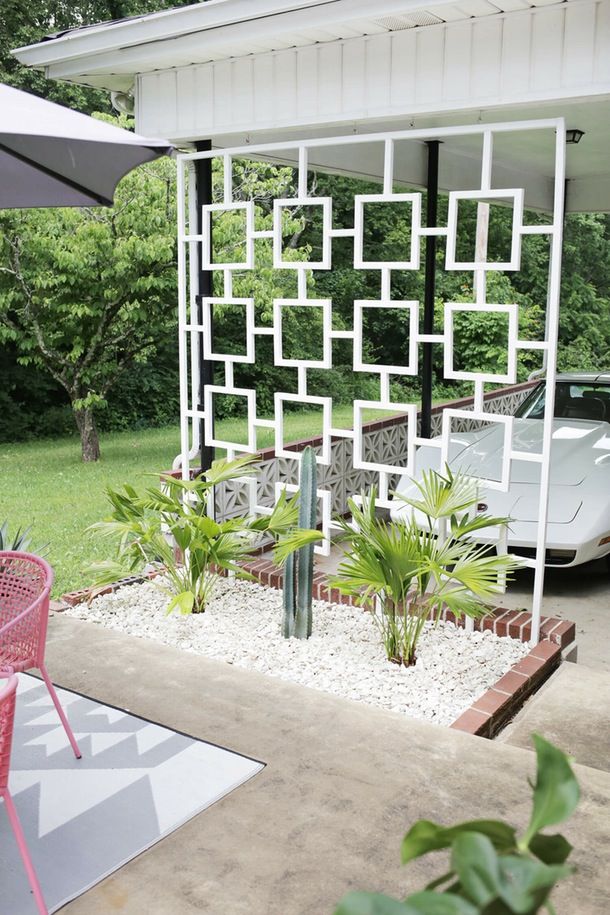 To avoid this, a mesh is first placed on the soil, which prevents the gravel from subsidence.
To avoid this, a mesh is first placed on the soil, which prevents the gravel from subsidence. - For creating aviaries and cages for animals and birds.
In addition, a plastic net is placed on the ground when arranging grass lawns, as well as to protect the summer cottage from moles. There is a special net for protection from birds. It is lightweight and does not interfere with plant growth.
Installation of plastic mesh fences
Installation of polymeric fences is usually easy. Installation is carried out in the following order:
- Mark the site and determine the places where the supports will stand.
- At a distance of 2 - 3 m from each other, they dig holes for fence posts.
- Insert and concrete supports. Pillars with the help of a level are correctly set vertically, and also check the distance to the ground. As supports, metal pipes with a diameter of up to 15 cm, fittings, wood or special plastic posts that match the color of the grid are used.



